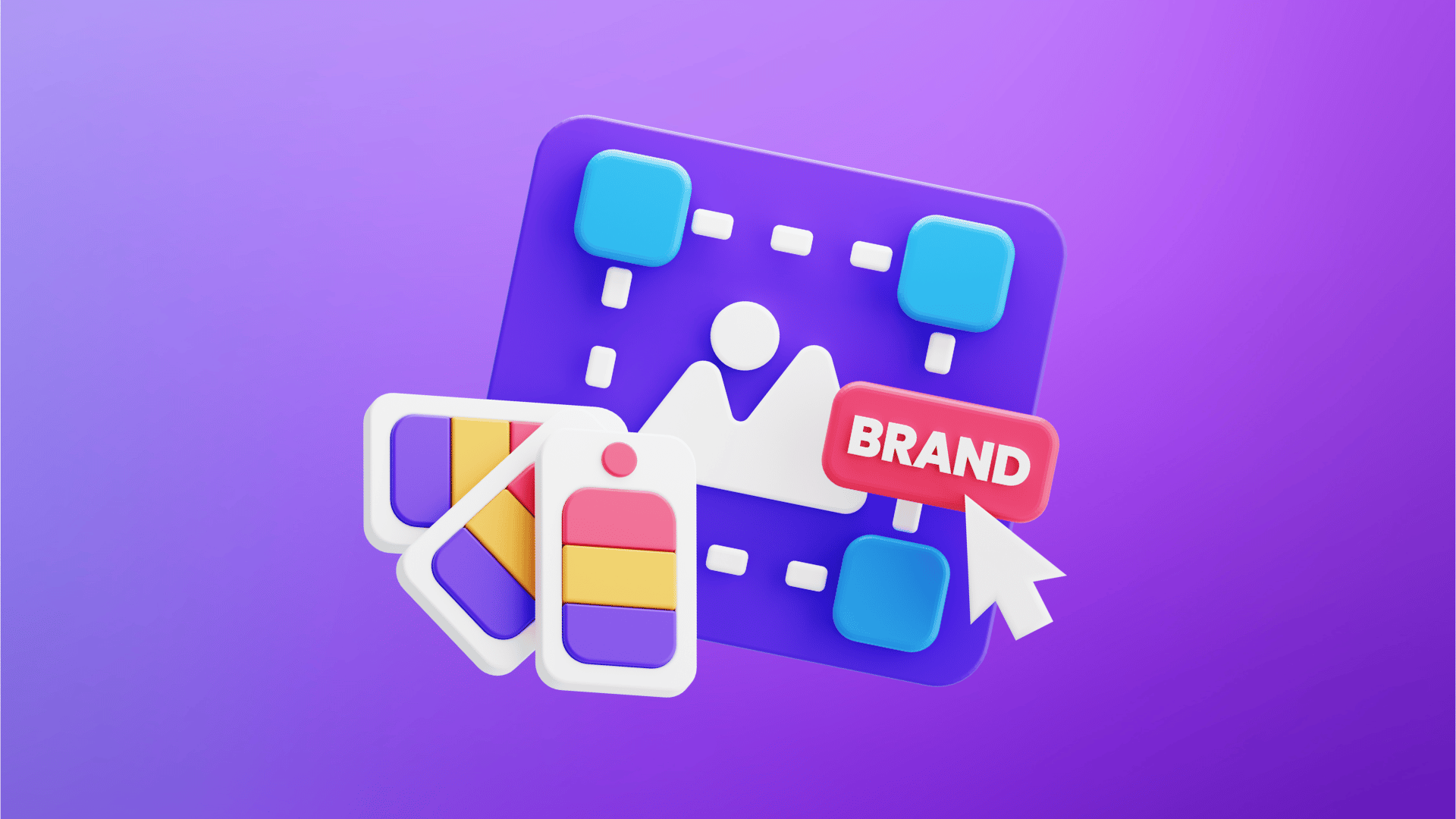Marketers and businesses alike struggle with generating traffic and leads to their website… and with so many way to tackle this task in 2025, no wonder why so many of us get overwhelmed on how to start.
The first page of Google grabs 71% of all search traffic clicks, which leaves other pages scrambling for the remaining share. Research shows that 21% of business owners say low site traffic is their biggest website challenge. But here’s the silver lining – well-crafted blog headlines can boost your website traffic by 500%.
This article will show you proven ways to boost your website traffic without spending a fortune, from learning everything from creating engaging content through to clever search engine optimisation techniques that will increase your free website traffic.
On top of this, we’ll provide strategies to grow your website traffic through a “social-first approach” or some more traditional methods, such as email marketing.
Email marketing delivers an impressive $36 ROI for every dollar spent, and you’ll also learn eco-friendly ways to grow your organic website traffic.
Let’s do this…
Build a Strong Content Foundation
Quality content serves as the life-blood of any successful SEO & website traffic strategy.
Your website won’t attract or keep visitors without good content, even with perfect technical optimisation – you have to have content that aligns to what your audience is searching for. A strong content foundation needs more than regular publishing – you must create material that helps your audience (helpful content) and positions your site as an authority within your industry.
Start a blog with helpful content
Blogs provide one of the best ways to boost website traffic naturally. They make up over one-third of all websites worldwide, and more than 77% of internet users read blogs in 2024. Readers keep coming back because they want useful knowledge and solutions to their problems.
Your blog should follow these basic principles:
- Solve real problems for your audience. Content should improve readers’ lives in some way – otherwise, publishing it serves little purpose. Google now ranks content that helps people rather than content just made for search engines.
- Show your expertise through content. Google looks at Experience, Expertise, Authoritativeness, and Trustworthiness (E-E-A-T) for content ranking. Add author bios with relevant qualifications to build trust with readers and search engines.
- Make content easy to scan. People usually skim articles before reading them fully. Headlines, bullet points, and different formatting help readers find key information and understand better.
Deep research about your audience should come before content creation. Learning about their identity, challenges, and content preferences helps you create materials that strike a chord and bring traffic to your website.
Focus on evergreen topics
Content that stays relevant long after publication helps steady traffic growth. Your content strategy should build on evergreen content.
Evergreen content stays useful whatever time it’s published. Unlike news or trends that quickly get old, evergreen content attracts search traffic for years and gives excellent returns.
The best evergreen content includes:
- How-to guides teaching valuable skills
- Complete listicles offering solutions
- Deep explainers of basic concepts
- Product reviews for long-lasting items
- Articles fixing common problems
Picking evergreen topics needs careful thought. Start with keyword research using Google Trends to find topics matching your business and steady user searches. Look for issues that always trend online and interest your target audience.
Evergreen content needs regular updates. Even timeless pieces need periodic refreshes to stay relevant and maintain search rankings.
Use compelling headlines
Headlines make first impressions and often determine if people read further. “The purpose of a title is to get potential readers to read the first line of your content”. Those few words at the start can make your post go viral or stay hidden.
Good headlines come from understanding what makes your audience click. Write three to five possible titles before picking one. This helps clarify your value and ensures content delivers what it promises.
Strong headlines should:
- Show clear benefits—Tell readers exactly what they’ll gain. Headlines promising solutions bring more traffic.
- Include power words—Some words get better responses. Terms like “free,” “stunning,” “find,” and “secrets” spark curiosity and engagement.
- Use relevant keywords—Search engines focus on titles to understand pages. Better SEO results come from keywords near the headline’s start.
Finally, helpful blogging, evergreen topics, and strong headlines create lasting website traffic. This approach brings immediate traffic and builds foundation for organic growth over time.
Optimize Your Website for SEO
Search engines bring about 93% of all website traffic to sites. This makes technical SEO optimization a must for anyone looking to boost their visitor numbers. You need to make sure search engines can properly understand, index, and rank your pages to get meaningful traffic to your website, even beyond creating great content.
Use long-tail keywords
Long-tail keywords bring in about 70% of all search traffic, yet many top brands skip them because they show lower search volume. These specific, longer search phrases (like “best instrument to learn Spanish online” instead of just “learn Spanish”) target users who know what they want. They are a great way to get more organic website traffic.
These keywords help generate organic traffic in two important ways. They have less competition, which makes ranking easier. Plus, they attract visitors who are really interested in what you offer. Here’s how to find effective long-tail keywords:
- Use Google Keyword Planner by entering a primary keyword and reviewing the suggestions
- Look through platforms like Quora and Reddit to find what questions your audience asks
- Match keywords to existing content or create new pages that focus on these terms
Note that good SEO isn’t about stuffing keywords everywhere – it’s about smart placement. Put your keywords in titles, URLs, meta descriptions, headers, and naturally in your content.
Improve meta titles and descriptions
Meta titles and descriptions serve as your website’s first impression in search results. While meta descriptions don’t directly boost rankings, they can improve click-through rates a lot, which helps SEO indirectly.
For meta titles (the clickable headline in search results):
- Keep them short but descriptive
- Put your main keyword near the start
- Use unique ones for each page
For meta descriptions:
- Stay within 150-160 characters to avoid cutoffs
- Use relevant keywords that Google will bold when they match searches
- Add a gentle call to action to get more clicks
- Make them unique and useful, showing what’s on your page
Google says that “a good meta description is short, unique to one particular page, and includes the most relevant points of the page”. Search engines will automatically create snippets from your page content if you don’t write custom descriptions. This means you lose control over how your page shows up in results.
Add internal links to key pages
Internal links connect pages within your website and create paths for users and search engines. They play a vital role for site owners who want better rankings. Google points out that “Internal linking is an essential factor for Google and other search engines” because it helps them find, index and understand how your content connects.
Your internal linking strategy should:
- Link from pages with authority to ones you want to rank better
- Use clear anchor text instead of just saying “click here”
- Connect related articles naturally
- Put important links near the top of the page
- Use your homepage’s authority by linking from it
Internal links also pass PageRank from pages with external authority to other pages on your site, making everything stronger. This helps new content that doesn’t have any backlinks yet.
Fix broken links and redirects
Broken links that lead to 404 errors hurt both user experience and search visibility. They stop link equity from flowing through your website and can make users trust you less. Search engines might also think a site with lots of broken links isn’t well maintained.
Here’s how to find and fix broken links:
- Check Google Search Console for 404 errors on your site
- Try tools like Screaming Frog, Ahrefs, or Semrush for detailed audits
- Look for broken links every 4-6 weeks
Use 301 redirects to send users and search engines to new relevant pages – this keeps most of the link value. For better results, update the original links to point directly to the right pages when you can.
These technical SEO improvements will build a strong foundation for better search visibility and user experience, leading to more website traffic.
Leverage Social Media Channels
Your brand could get up to 1 million website visits monthly through social media referrals. Many businesses haven’t yet tapped into this traffic source because they struggle with their platform strategies. You need a well-thought-out plan that turns your social presence into a steady stream of website visitors.
Share content consistently
A surprisingly simple rule drives social media traffic: show up regularly with fresh content that connects. Your chances of connecting with audiences and generating website traffic improve with regular posting. Your potential customers need to see your brand around 20 times before they really notice it.
You can stay consistent without burning out:
- Create a social media calendar: Google Sheets or Notion help you plan your content schedule. These tools let you track content goals, media types, KPIs, and posting times. Make sure to leave space for trending topics or industry events.
- Post at the right time: Schedule your content at times your followers are most active to maximize exposure. Look at your platform’s native analytics to learn when your specific audience connects most. Each platform has its peak times—Instagram and Facebook work best Tuesday through Thursday, while Wednesday is prime time for TikTok.
- Batch create content: Set aside specific days to create content and streamline your workflow. Creating multiple pieces at once gives you visual and thematic consistency while you stick to your publishing schedule.
Use relevant hashtags
Hashtags still work great to expand your reach and get your content seen. They work as content tags that help users find exactly what they’re looking for. Smart hashtag use makes your content much easier to find on social platforms.
Here’s how to make them work:
- Mix hashtag types: Use a mix of branded, niche, trending, and industry-specific hashtags. This creates several ways for different audience groups to find you. On Instagram, you’ll see better engagement with 3-5 carefully chosen tags per post.
- Tailor to each platform: Each platform handles hashtags differently. Instagram posts work well with 10-11 relevant hashtags on Stories or Reels, while Facebook and LinkedIn need just 1-3 targeted tags. Twitter (X) posts should stick to two hashtags at most for best results.
- Research competitor hashtags: Look at what works for others in your field instead of using generic terms. This helps you connect with established communities that care about what you offer.
Engage with your audience
Social media works both ways. Your traffic potential drops if you just schedule posts without interaction. About 28% of consumers follow brands to be part of their community, and 51% remember brands that talk back.
Build better connections by:
- Responding to every comment and DM: Your customers feel valued when you respond and they’re likely to engage again. This makes your brand more human and shows you listen. Quick responses build stronger relationships and make customers more loyal.
- Asking questions and creating interactive content: Add calls-to-action that make people want to comment and share. Try phrases like “Tag a friend who needs this!” to reach more people. Polls and Q&As get your audience involved and help you learn about their priorities.
- Sharing user-generated content: Show off content your customers create about your products or services. This real social proof works better than branded content to drive engagement and website visits.
These social media strategies will turn your channels from simple broadcast platforms into powerful website traffic generators.
Grow and Nurture Your Email List
Email marketing delivers one of the most direct ways to boost website traffic, with a remarkable $36 return on every $1 spent. Your direct connection to an audience happens through email, unlike social media or search engines where algorithms control visibility. These subscribers have actively chosen to receive your communications.
Offer lead magnets
Lead magnets serve as powerful incentives that turn casual visitors into email subscribers. Visitors trade their email address for valuable resources they want, creating a simple exchange of contact information.
The best lead magnets solve real problems right away. Research shows quizzes perform exceptionally well—a company’s opt-in rate jumped from 0.37% to 4.14% by adding a content upgrade to their blog post. Successful lead magnets often include:
- Educational resources (style guides, recipe collections)
- Digital tools (calculators, templates)
- Exclusive access (pre-sales, limited editions)
- Discount codes or special offers
Your signup forms should have minimal fields, clear benefits, and smart placement to maximize conversions. A footwear brand discovered their exit popup converted 2.7x better than their standard welcome popup.
Send regular newsletters
Newsletters form the foundation of email traffic generation and keep your brand memorable while delivering value. Email newsletters help achieve two vital goals: they boost web traffic and nurture leads.
Newsletters that drive website visits should prioritize educational content that solves real problems. Your subscribers will see you as a trusted resource when they get practical value from your emails. Adding quality newsletters to your website as permanent content creates more opportunities to capture long-tail search traffic.
Engagement matters just as much as content. Adding surveys and polls boosts open rates and gives you useful information about what subscribers want. This two-way conversation builds trust and makes subscribers more likely to visit your website.
Segment your audience
Email segmentation splits your subscriber list into targeted groups based on specific criteria, so you can send more relevant, personalized content. Smart segmentation gets results—these campaigns generate 760% more revenue than non-segmented ones.
The most effective segmentation strategies include:
Demographic segmentation: Group subscribers by traits like age, gender, or location to create messages that strike a chord with specific demographics.
Behavioral segmentation: Target based on previous actions such as purchase history, email engagement, or website browsing behavior.
Psychographic segmentation: Focus on interests, values, and lifestyles to create content that matches what subscribers care about.
A beauty brand saw double-digit year-over-year growth in revenue after they focused campaigns on their most engaged subscribers—those who had interacted with at least one email in the previous 120 days.
Email list building and segmentation create a foundation to grow website traffic sustainably. You’ll develop a reliable traffic source under your control through strategic lead magnets, valuable newsletters, and smart audience segmentation.
Get Backlinks from Trusted Sources
Backlinks work like digital endorsements for your website. They tell search engines that other sites value your content. Quality backlinks from trusted websites signal Google that your web page deserves attention, which boosts your rankings and brings more visitors to your site.
Write guest posts
Guest posting stands out as one of the best ways to earn quality backlinks and get your brand noticed. This approach helps you build real connections with authoritative websites and establishes you as an industry expert.
To make your guest posting work better:
- Choose respected publications that match your audience and niche, not just any site taking submissions
- Suggest fresh, useful content ideas that their readers will love
- Ask for contextual links in your content or at least a byline linking to your website
- Build lasting relationships instead of just chasing quick backlinks
Start by finding authoritative blogs in your industry. Use search strings like “keyword” + “write for us” or look at where your competitors publish. All the same, stay away from sites that publish everything – these usually have too many outbound links, which makes each link less valuable.
Your next step is to create outstanding, well-researched content that fits the host blog’s readers. The content should inform, engage, and add enough value that site owners see it as an asset to their platform. Add relevant links that flow naturally within your text.
Create shareable infographics
Infographics pull in 178% more backlinks than plain articles. Visual content gets 650% more engagement than text alone, and readers are 30 times more likely to read a full infographic than a text article.
Your infographics will work better when you:
- Tackle specific problems in your niche
- Show data from your own research or unique insights
- Create eye-catching graphics that people can understand and share easily
- Add an embed code that includes a backlink to your site
Push your infographic through different channels once it’s ready. Put it on social media, in email newsletters, and share it with online communities. Look for websites that could use your visual content and reach out with a personal message about how it could make their content better.
Reach out to industry blogs
Smart outreach lays the groundwork for solid link building. Connecting with relevant websites opens doors for valuable backlinks and helps build real industry relationships.
Make your outreach count by:
- Building a focused list of prospects with tools like Ahrefs or Semrush to find sites linking to similar content
- Making each message personal by mentioning specific content you liked on their site
- Stating clearly what value you bring – whether fixing a broken link, adding information, or offering a fresh take
Keep your outreach emails brief (around 100 words). Use compelling subject lines and get right to the point. Skip the generic templates that websites see every day. Write personal messages that show you understand their content and audience.
Note that successful link building comes from creating real value for other websites. Consistent high-quality content and thoughtful outreach will help you build a network of backlinks that bring more organic traffic to your site.
Improve Technical Performance
Technical performance is the foundation of successful website traffic growth. Today’s ever-changing digital world demands lightning-fast, user-friendly experiences whatever device you use. Even the most compelling content won’t help boost your website traffic if technical problems drive users away.
Speed up your site
Page speed affects both user experience and search rankings by a lot. Research shows that sites loading in one second have conversion rates three times higher than those loading in five seconds. First impressions count—user frustration grows with longer load times, and 54% of people get more frustrated as pages take longer to load.
To improve your site speed:
- Compress images using tools like TinyPNG or Compressor.io
- Minify CSS and JavaScript files to reduce file size
- Enable gzip compression for text-based resources
- Implement lazy loading for below-the-fold content
- Use a content delivery network (CDN) to reduce geographic latency
Tools like Google PageSpeed Insights, GTmetrix, and Lighthouse can spot specific performance issues. These tools give you useful data about metrics like First Contentful Paint, Largest Contentful Paint, and Total Blocking Time.
Make your site mobile-friendly
Mobile devices generate over 63% of global web traffic. Google now uses mobile-first indexing, which means your site’s mobile version determines its ranking. Mobile optimization has become essential to grow your website traffic organically.
Your mobile optimization should:
Start with responsive design that adapts to any screen size automatically. The viewport meta tag needs to go in your HTML head: <meta name="viewport" content="width=device-width, initial-scale=1.0">.
You should reduce friction by keeping form fields minimal, adding click-to-call for phone numbers, and sizing touch targets properly. The “fat finger principle” matters a lot in mobile interface design.
Use schema markup
Schema markup adds semantic vocabulary to your HTML that helps search engines understand your content better. This structured data creates rich snippets in search results, making your listings more appealing and informative.
Adding schema markup can boost visibility and click-through rates without directly changing rankings. Reviews, products, events, FAQs, and organizations are among the most common schema types.
Here’s how to implement schema correctly:
- Identify key content types on your site
- Add structured data using JSON-LD format
- Verify your code using Google’s Rich Results Test
- Monitor SERP results and update your schema as needed
A systematic approach to improving these technical aspects creates solid groundwork for lasting traffic growth.
Use Analytics to Guide Your Strategy
Analytics act as your website traffic strategy’s compass. They give you analytical insights that help you make calculated decisions instead of guessing. The difference between websites that soar and those that struggle comes down to how well they use their data.
Track traffic sources
Your visitors’ origin helps you put your resources into channels that work best. Google Analytics splits traffic into key categories like organic search, direct, referral, and social media.
A look at your traffic sources lets you:
- Spot your best channels at bringing visitors so you can focus more there
- Find channels that need improvement
- Build targeted messages based on where visitors live and what they do
The Source/Medium report in analytics tools shows which websites send people your way. You also get valuable metrics like engaged sessions and conversion rates. These numbers help you invest more in sources that work well and rethink those that bring low-quality traffic.
Monitor bounce rates
Bounce rate shows how many visitors leave a page without doing anything else. High numbers usually mean people aren’t finding what they want or they hit a poor user experience.
Your bounce rate investigation should look at everything – time on site, where traffic comes from, and what devices people use. Ecommerce or retail businesses usually see rates between 20% and 45%. B2B industries like software typically have higher rates around 70%.
Your content should match what visitors expect from your traffic sources to lower bounce rates. Pages with high bounce rates from specific sources might show a gap between visitor expectations and what they find.
Identify top-performing pages
The analytics dashboard shows which pages pull in the most visitors and engagement. Your content’s performance appears in the Pages report with key traffic metrics. This helps you learn what appeals to your audience.
Top-performing content analysis is a great way to get ideas for creating new content. Pages that keep people engaged often point to topics your audience values. The conversion paths also reveal which pages successfully guide visitors toward taking action.
These metrics help you build an approach based on real user behavior rather than assumptions. This way, you can keep making your traffic strategy better.
Explore Paid Advertising Options
Paid advertising helps boost website traffic quickly while organic strategies take time to show results. Your business can see immediate impact within minutes instead of waiting for months with a well-laid-out campaign strategy.
Run Google Ads
Google Ads puts your website front and center in search results right away. This platform works best because it reaches users who actively look for solutions like yours. Research proves that paid search ads excel at converting bottom-funnel customers into sales.
Your Google Ads campaigns will perform better if you:
- Define specific goals such as traffic increase, lead generation, or brand awareness
- Pick the right bidding approach – like Maximize Clicks for traffic-focused campaigns
- Add extras such as sitelinks and phone numbers that boost click-through rates significantly
Use Facebook and Instagram ads
Meta Ads give businesses exceptional reach with access to over 3.8 billion users on Facebook and Instagram. These platforms shine at precise targeting and let you flex your creative muscles.
Your Meta Ads will deliver better results when you:
- Let Instagram’s algorithm find your perfect audience through broad targeting
- Streamline your campaign structure to help the algorithm learn and perform better
- Mix different ad formats like videos, carousels, and stories to reach various audience groups
Retarget past visitors
Retargeting helps you reconnect with people who browsed your site but didn’t convert. The numbers speak for themselves – retargeted visitors convert 70% more often than new ones.
Smart retargeting strategies include:
- Creating audience groups based on pages visited and actions taken
- Setting up dynamic ads that show products people already viewed
- Managing ad frequency to keep your message fresh without overwhelming viewers
Paid advertising works as a powerful boost to organic strategies. It brings targeted visitors to your site exactly at the time you need them.
Conclusion
Your website needs multiple strategies to drive traffic instead of depending on just one approach. This piece explores proven methods that work together to create a powerful traffic-generation system. Each technique plays a crucial role in your online presence’s ecosystem.
Quality content serves as the foundation for all traffic strategies. Even the most sophisticated SEO or advertising tactics won’t succeed without valuable content that strikes a chord with your audience. Your top priority should be creating content that truly helps your visitors.
Technical optimization connects great content with visibility. Search engines can find, understand, and rank your content properly through page speed, mobile-friendliness, and schema markup. Your site’s technical foundation becomes stronger when you fix broken links and implement strategic internal linking.
Direct connections with your audience come through social media and email marketing, which help you build relationships and drive steady traffic. Quality backlinks from trusted sources build authority and expand your reach across the web ecosystem.
Your strategy refinement should rely on data. Analytics show which methods work best in your specific case, so you can focus on successful tactics and improve or drop the ones that underperform. Paid advertising brings immediate traffic while organic methods build momentum.
The digital world keeps changing, but these core principles continue to work whatever algorithm changes or platform updates occur. Websites that apply these strategies and adapt to new developments will without doubt succeed in 2025 and beyond. These tactics, when implemented today and measured carefully, can transform your website from an underperforming asset into a vibrant hub of active visitors.
FAQs
Q1. What are some effective ways to increase website traffic? Some proven strategies include optimizing your site for search engines (SEO), creating high-quality content, engaging on social media, building an email list, and obtaining backlinks from reputable sources. Paid advertising can also provide a quick boost in traffic when needed.
Q2. How long does it typically take to see significant growth in website visitors? The timeframe can vary depending on your strategies and industry. While some tactics like paid advertising can yield immediate results, organic methods such as SEO and content marketing often take 3-6 months to show substantial growth. Consistency and patience are key.
Q3. Is it possible to get 1000 visitors per day to my website? Yes, it’s achievable with the right approach. Focus on creating valuable content consistently, optimizing for search engines, promoting your content across various channels, and maintaining a regular publishing schedule. It may take time, but with persistence, you can reach this goal.
Q4. How important is mobile optimization for increasing website traffic? Mobile optimization is crucial. With over 63% of global web traffic coming from mobile devices, having a mobile-friendly website is essential. It not only improves user experience but also positively impacts your search engine rankings, as Google uses mobile-first indexing.
Q5. What role does analytics play in growing website traffic? Analytics is vital for guiding your traffic growth strategy. It helps you track traffic sources, monitor bounce rates, identify top-performing pages, and understand user behavior. This data allows you to make informed decisions, focus on what works, and continuously improve your approach to increasing website visitors.
Author
-

Managing Director of one of Australia's leading Digital Marketing Agencies... With over 7+ years of hands on experience in SEO, managing both national & international organisations SEO strategy and campaign distribution. Having won several international awards (Search Awards, Clutch, TechBehemoth etc.) for both paid media and search campaign success... He is a front runner in leading search and defining the playbook for the Australian market.
View all posts











